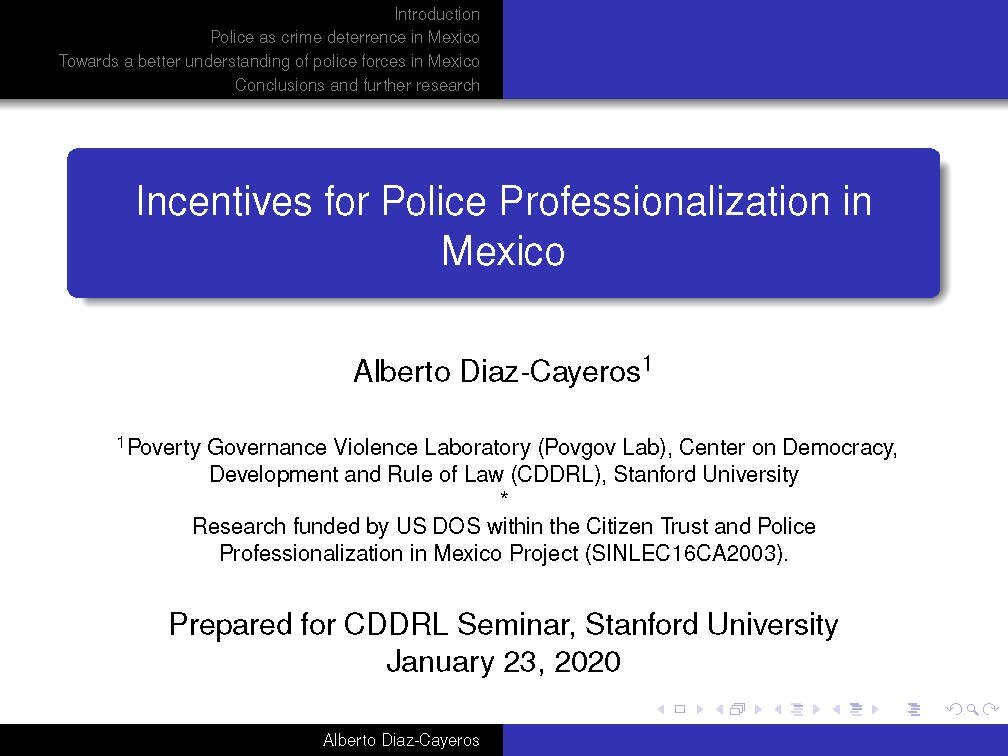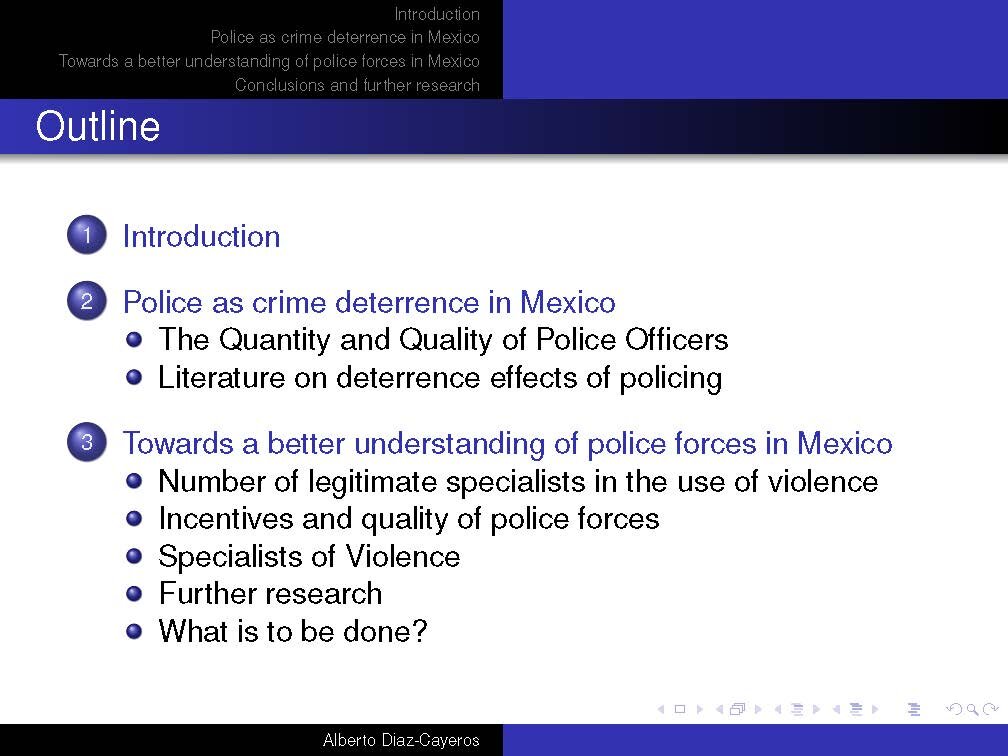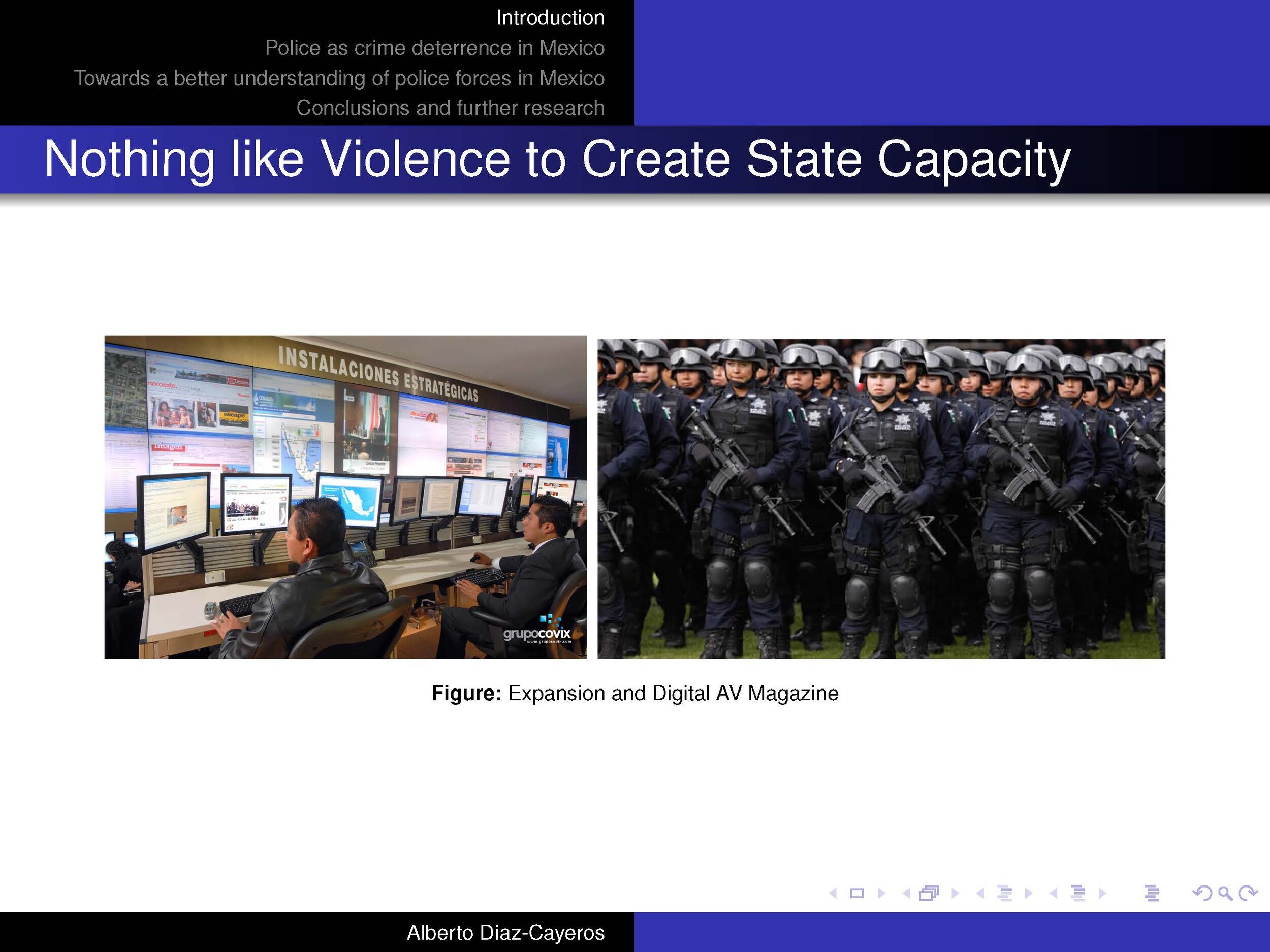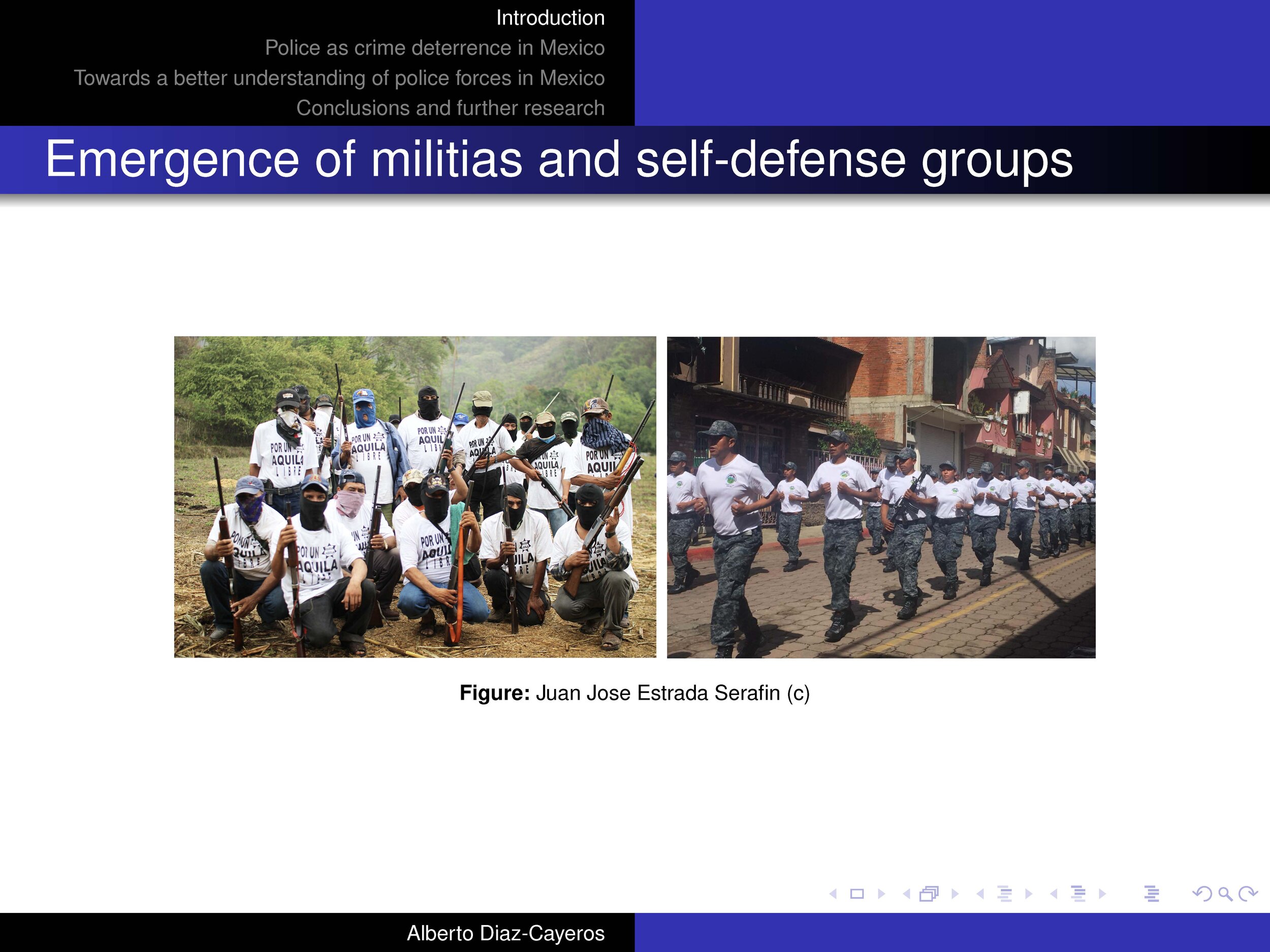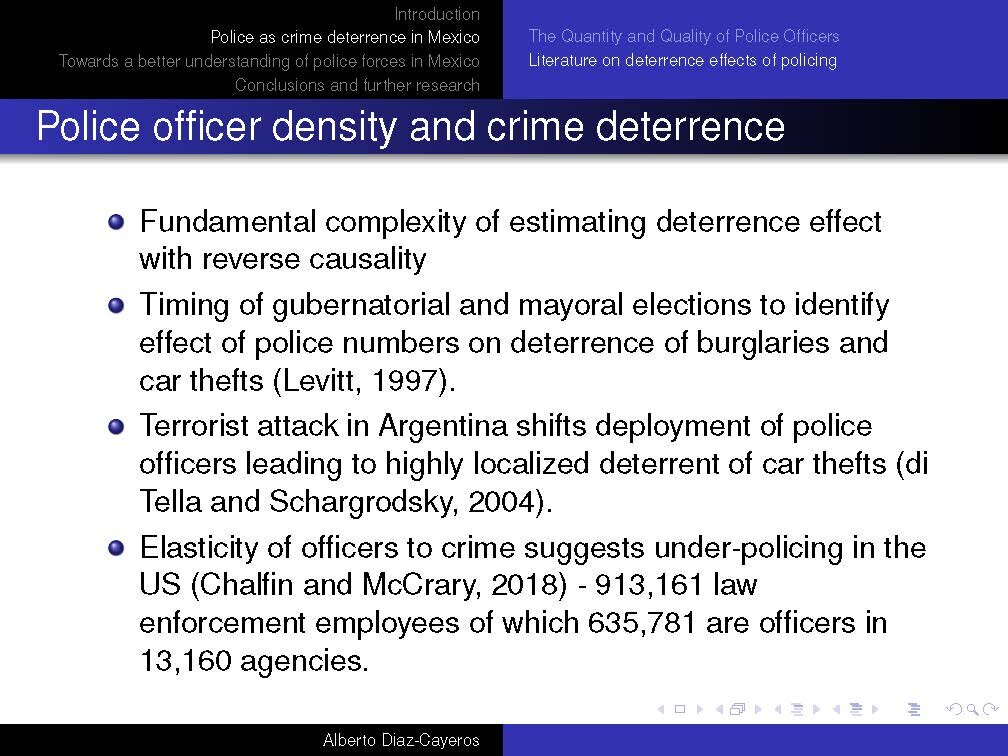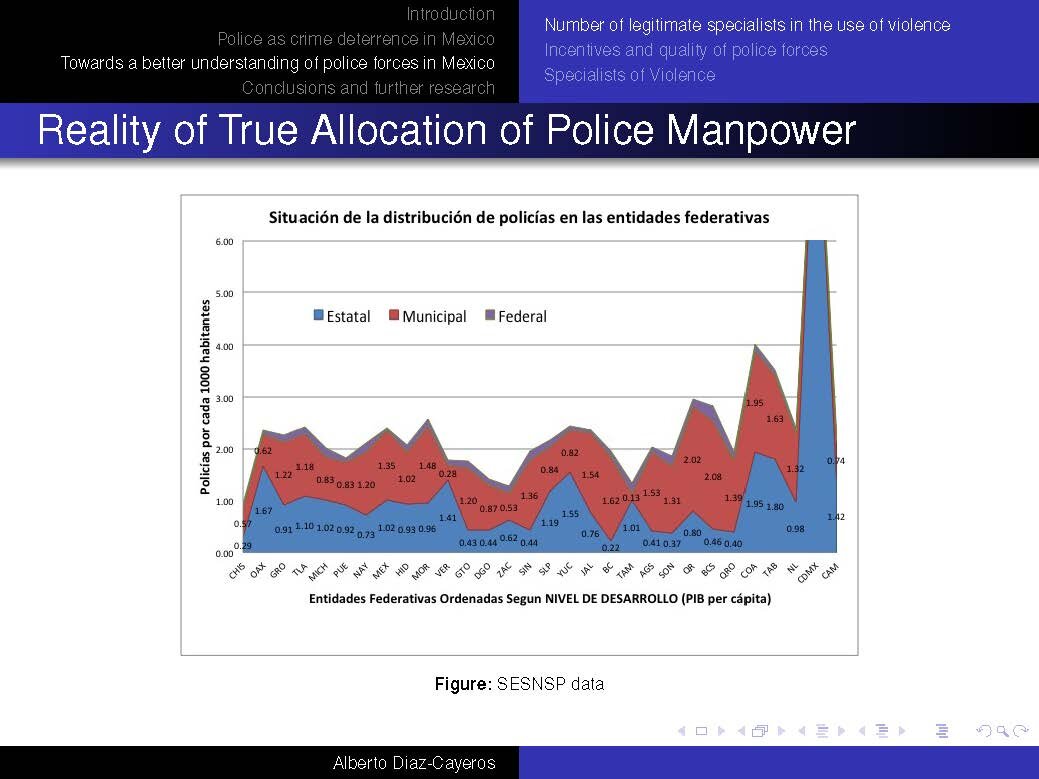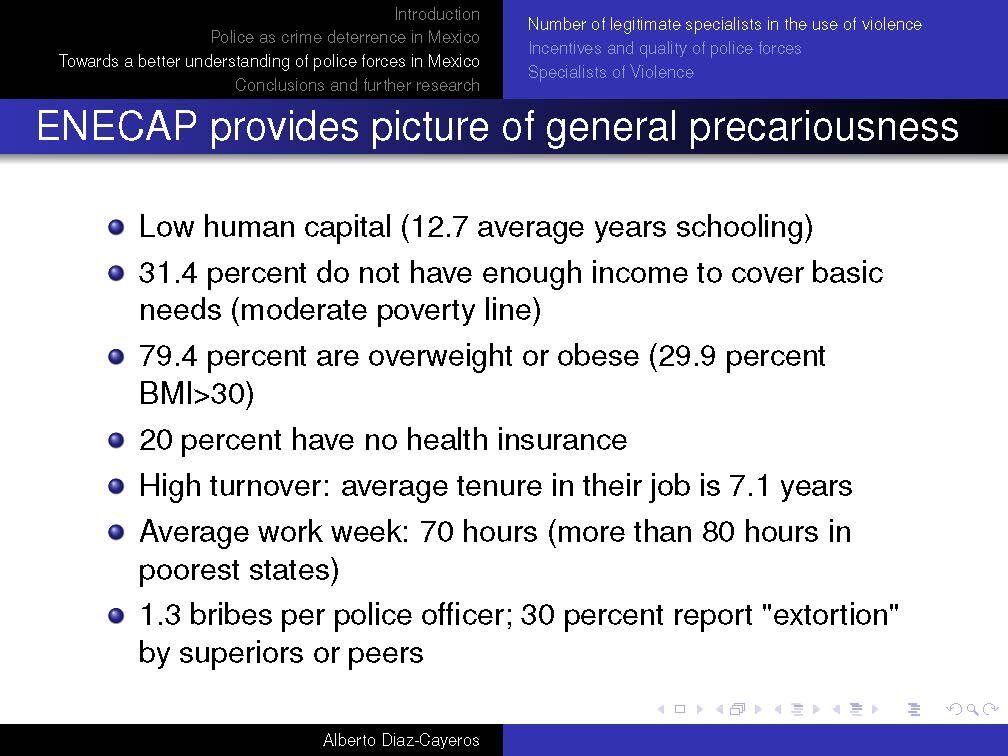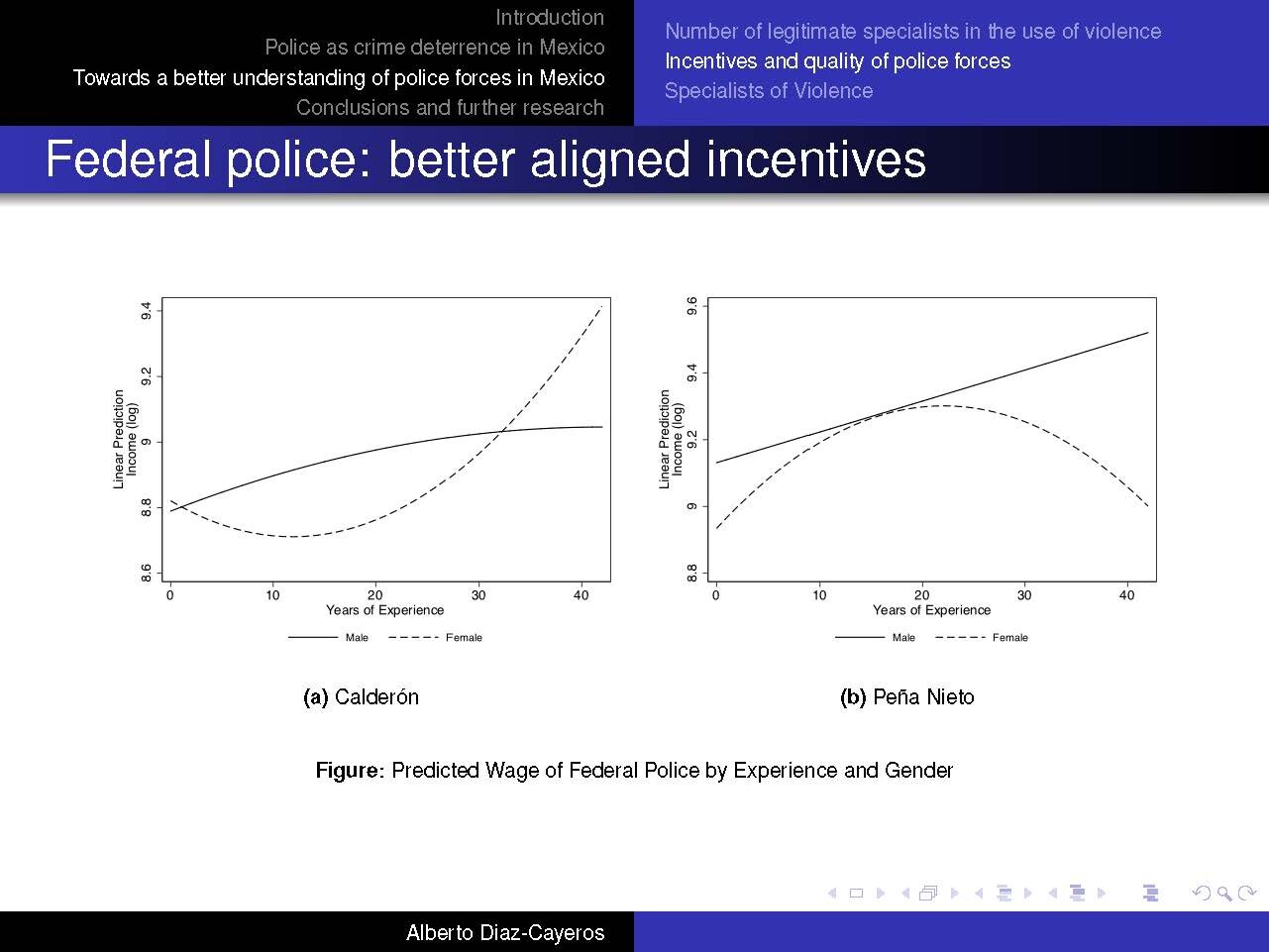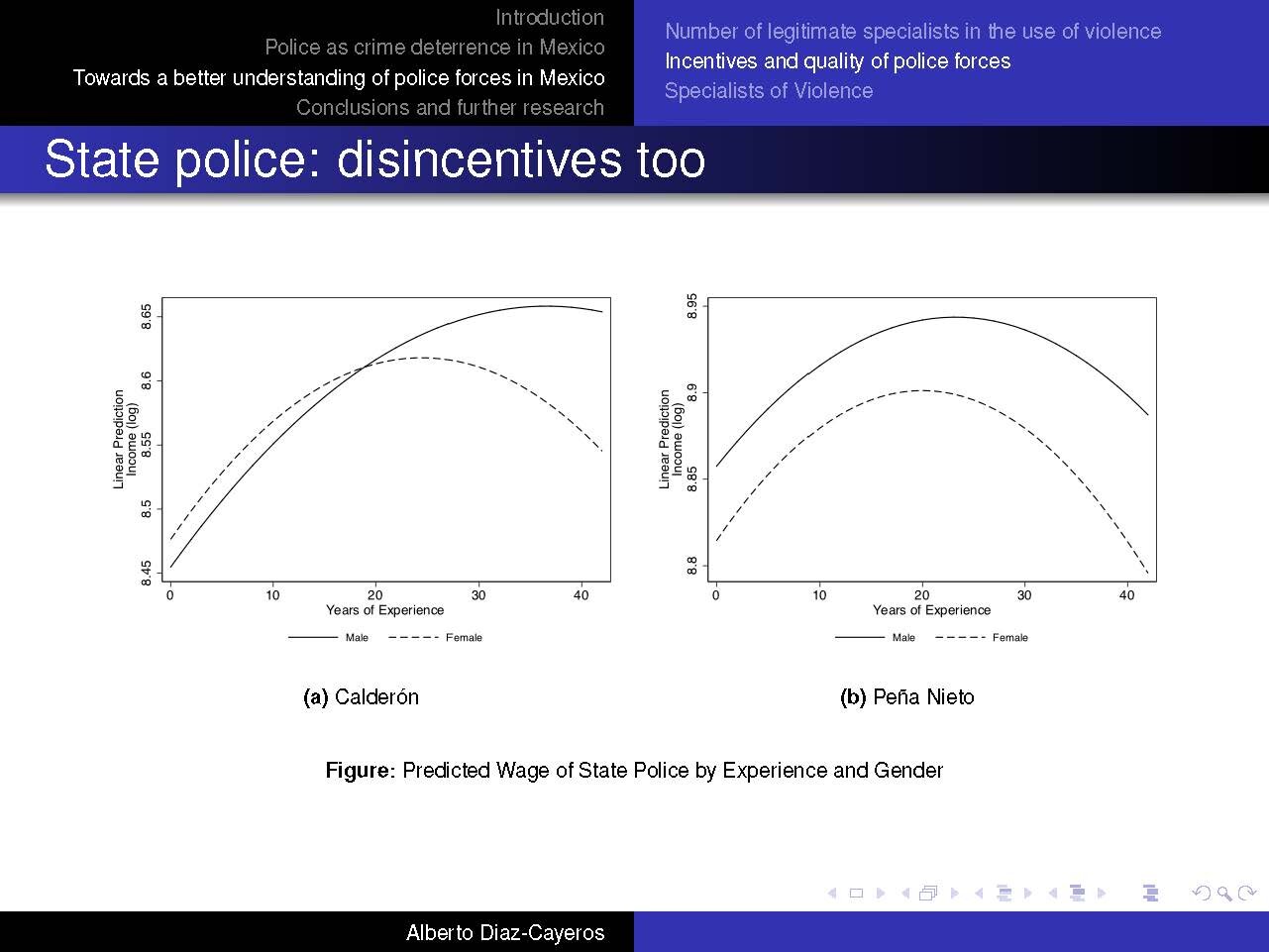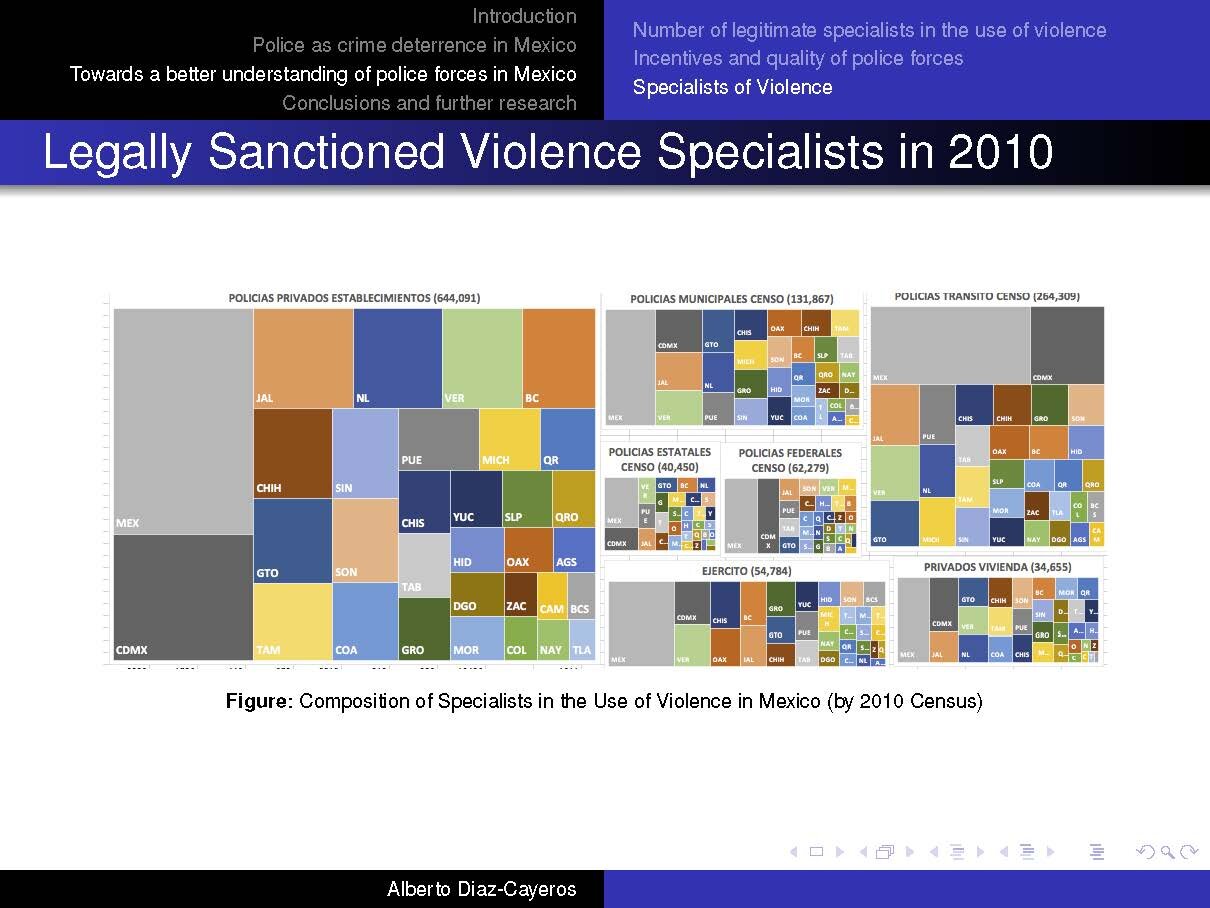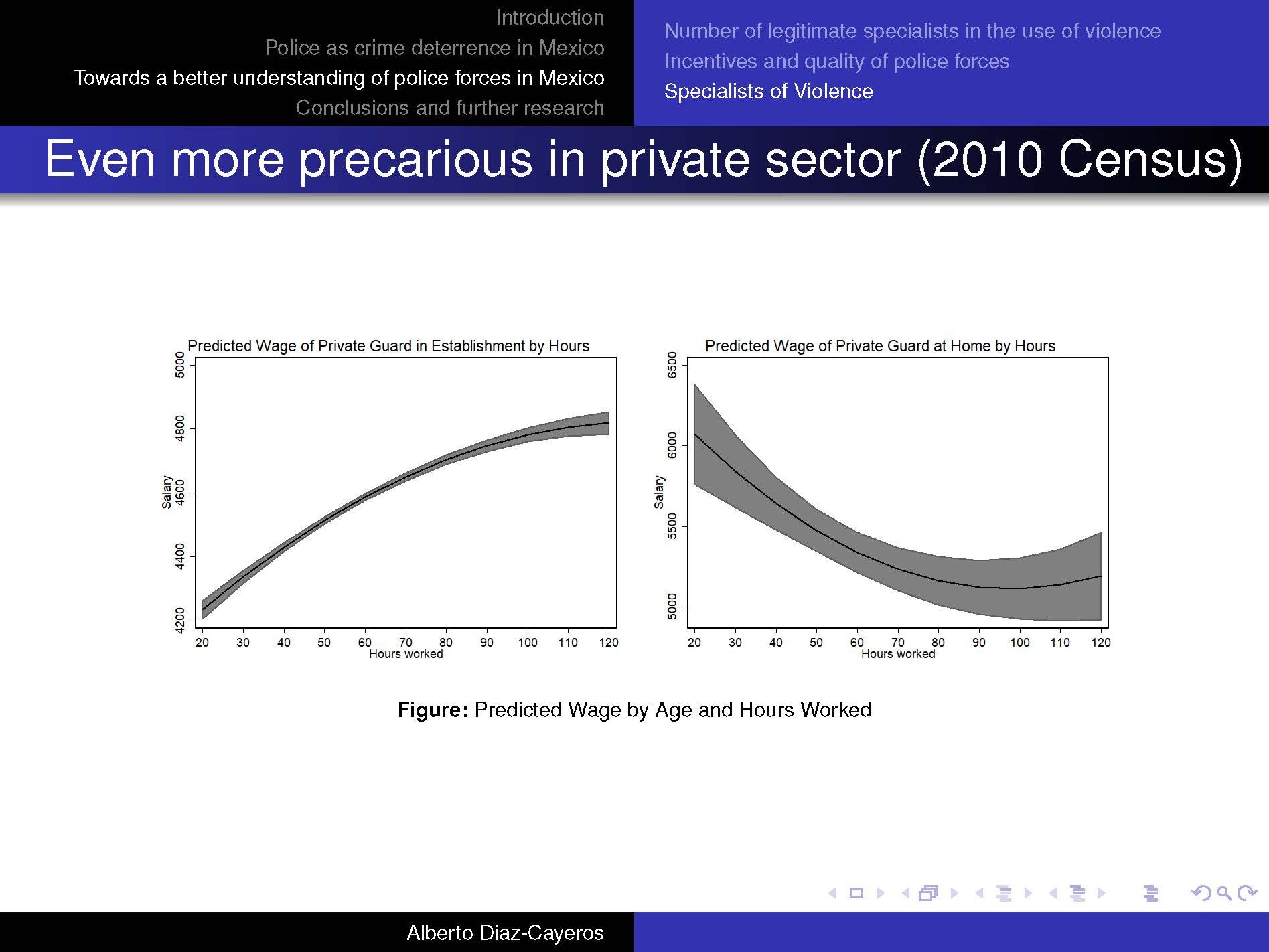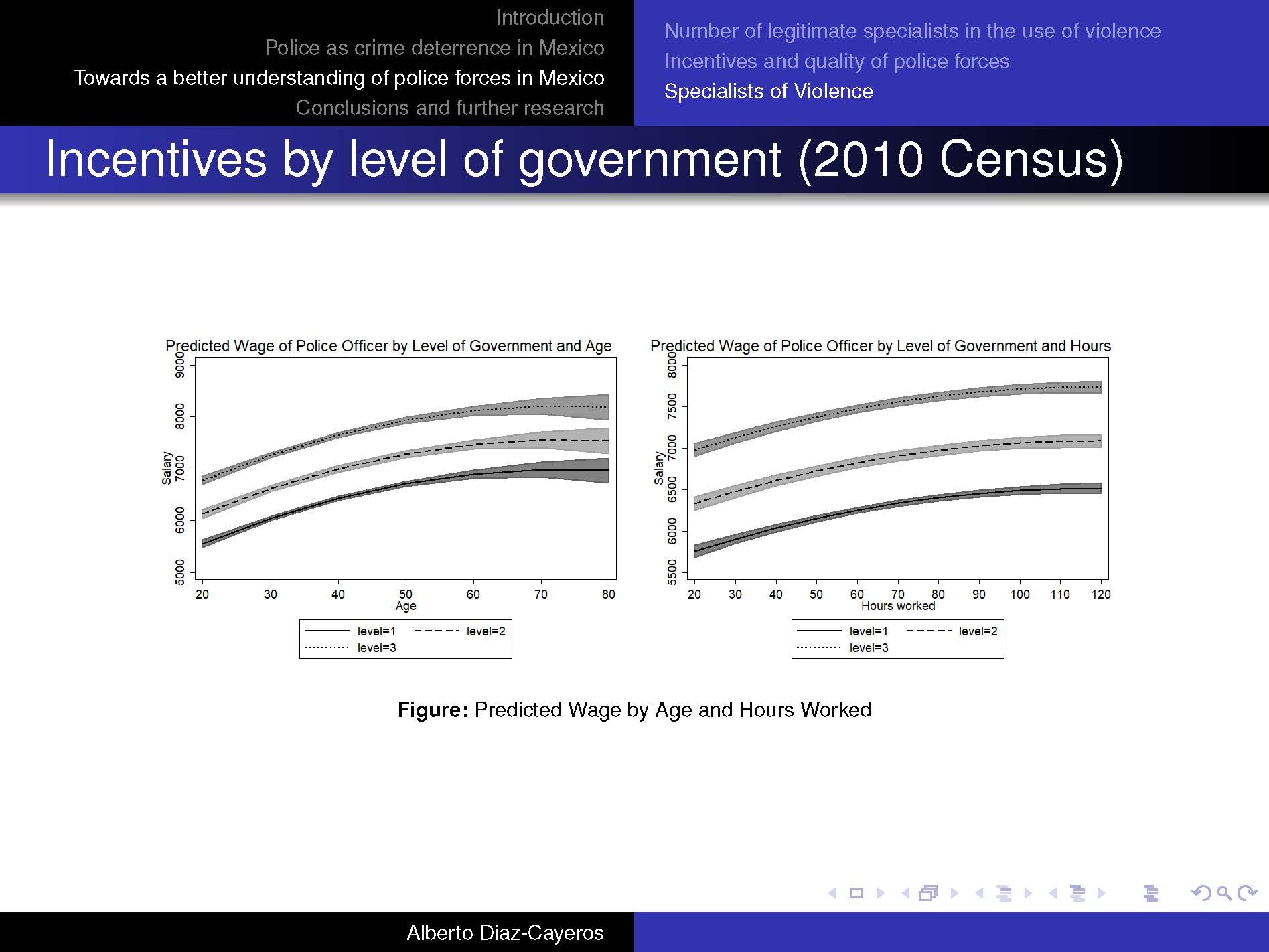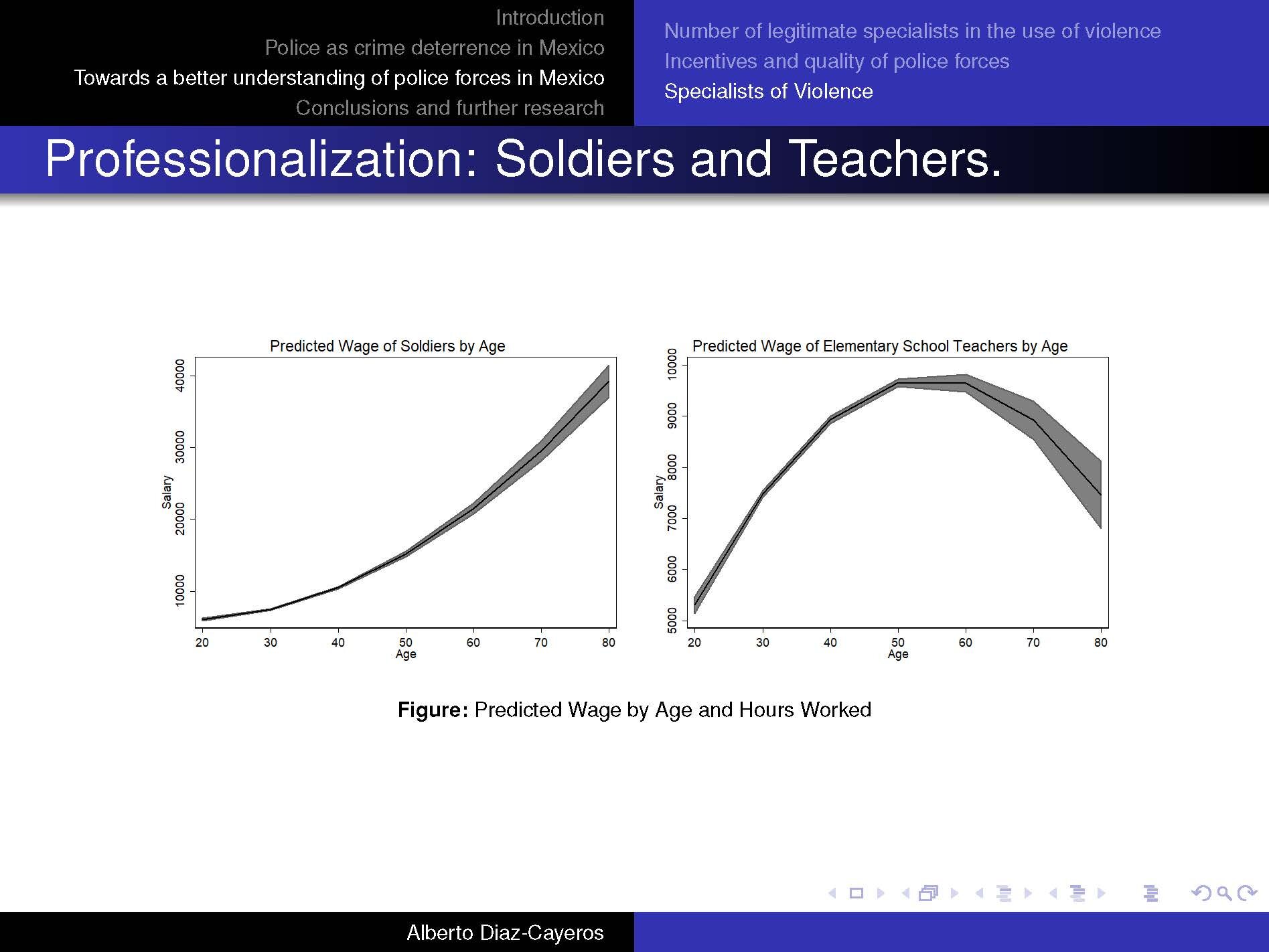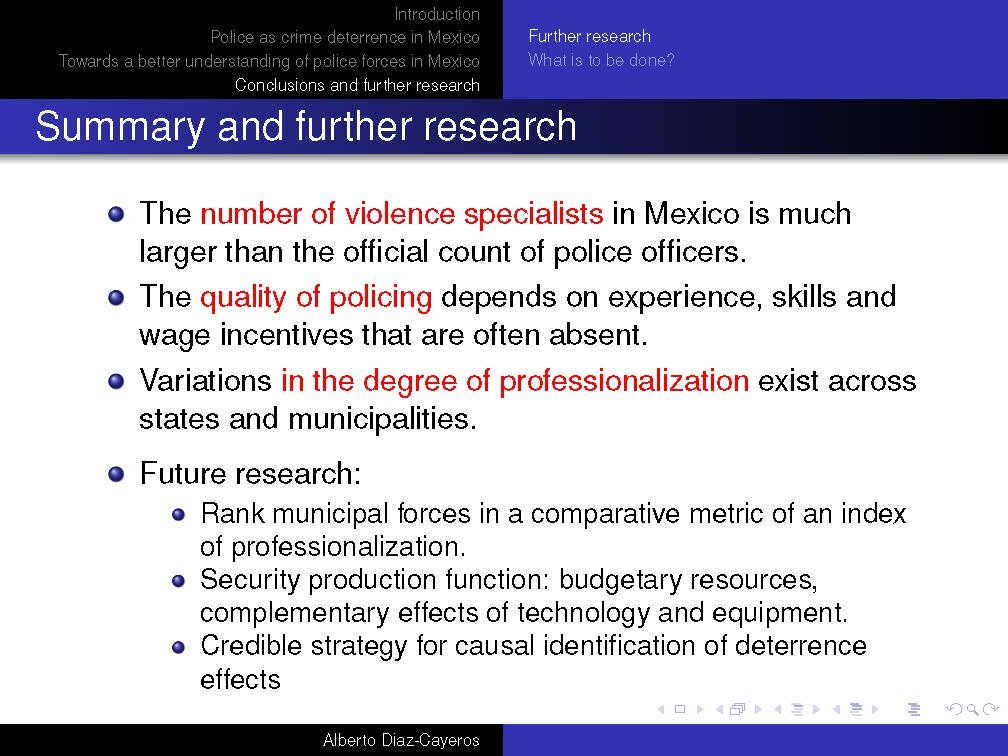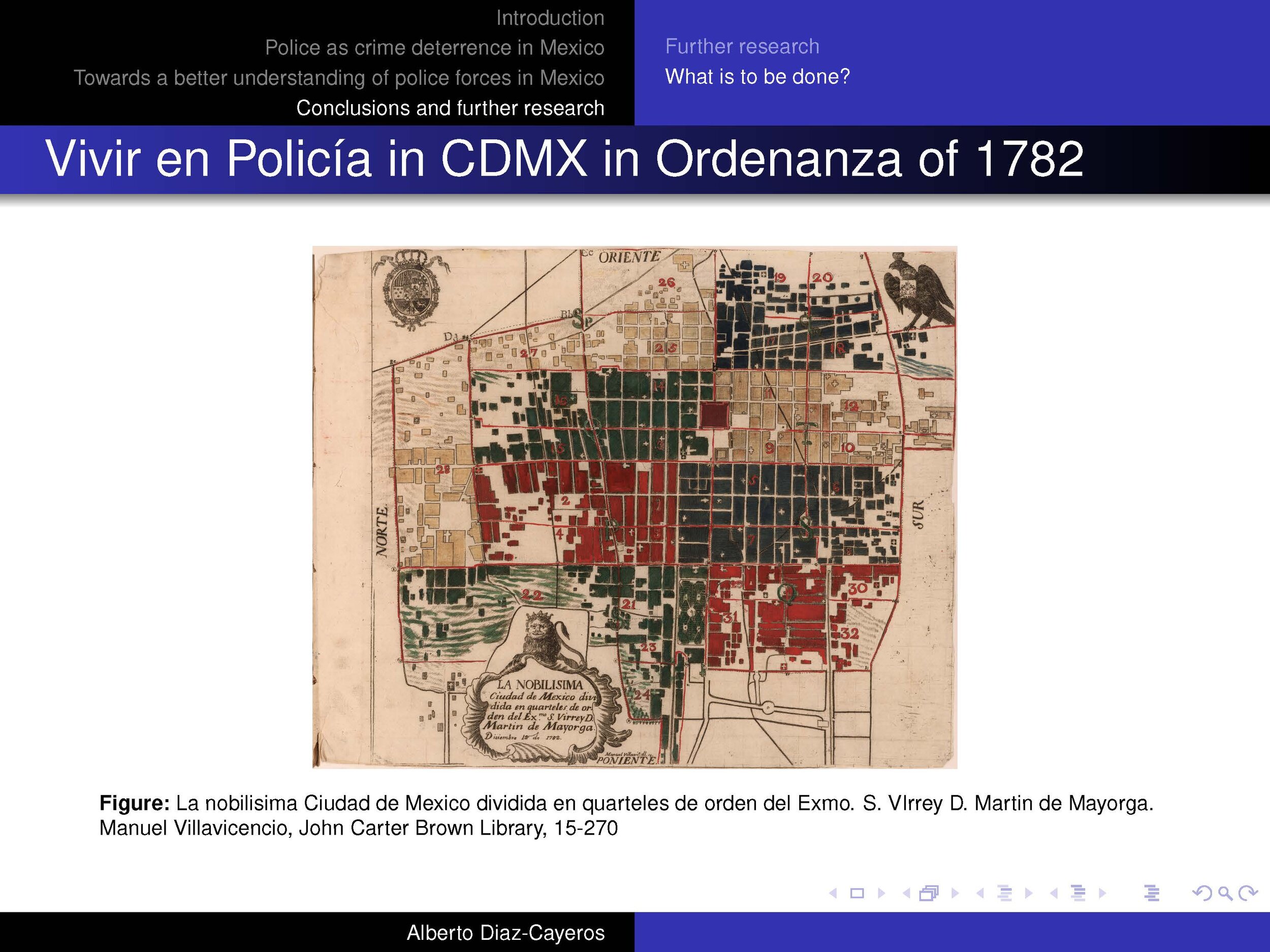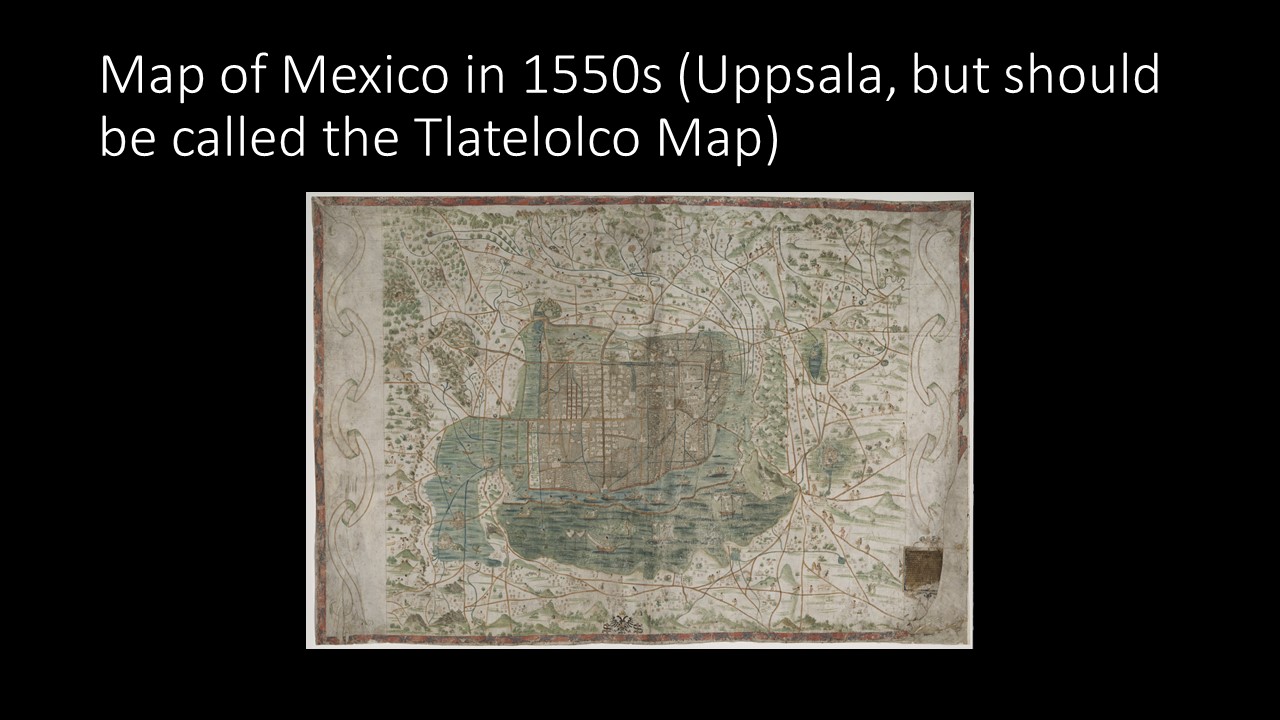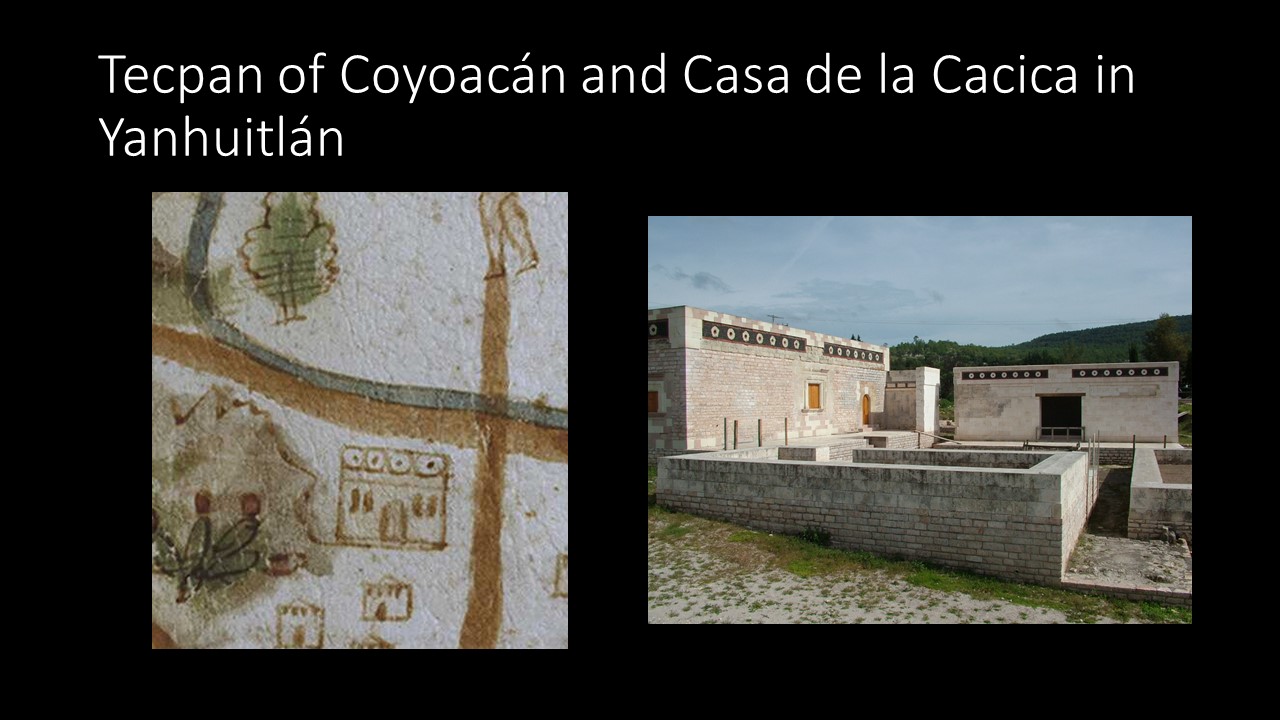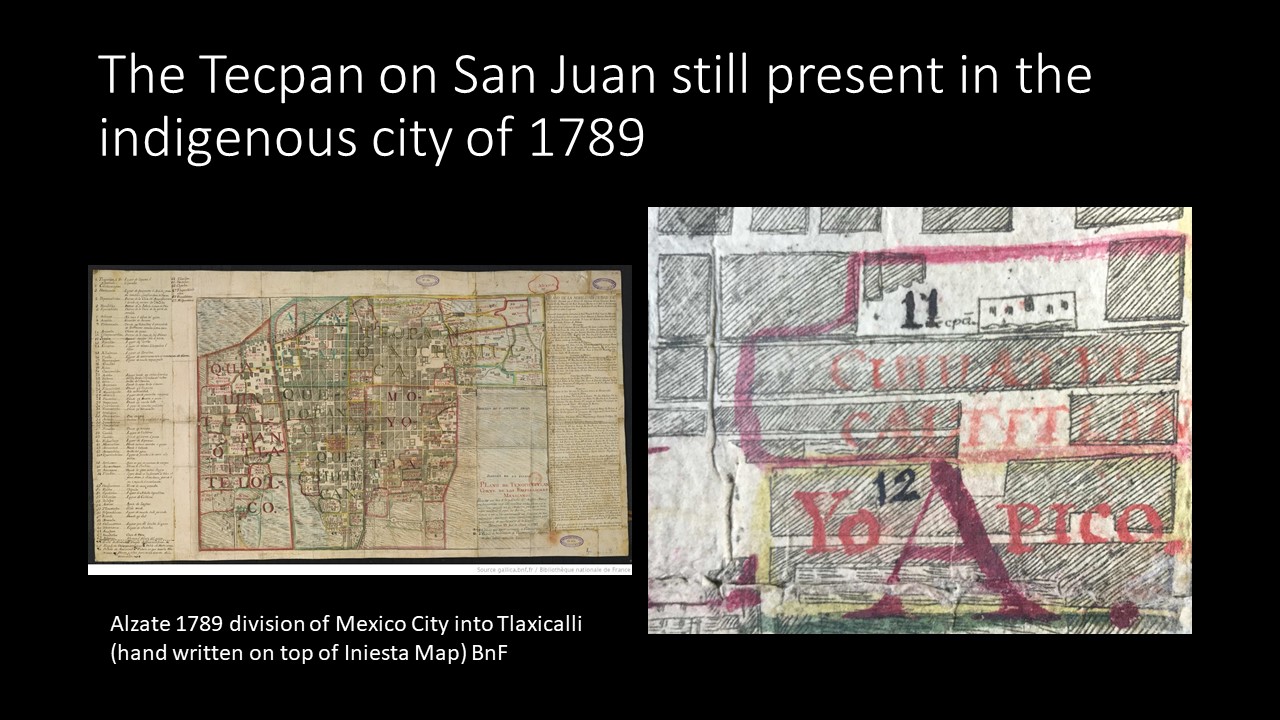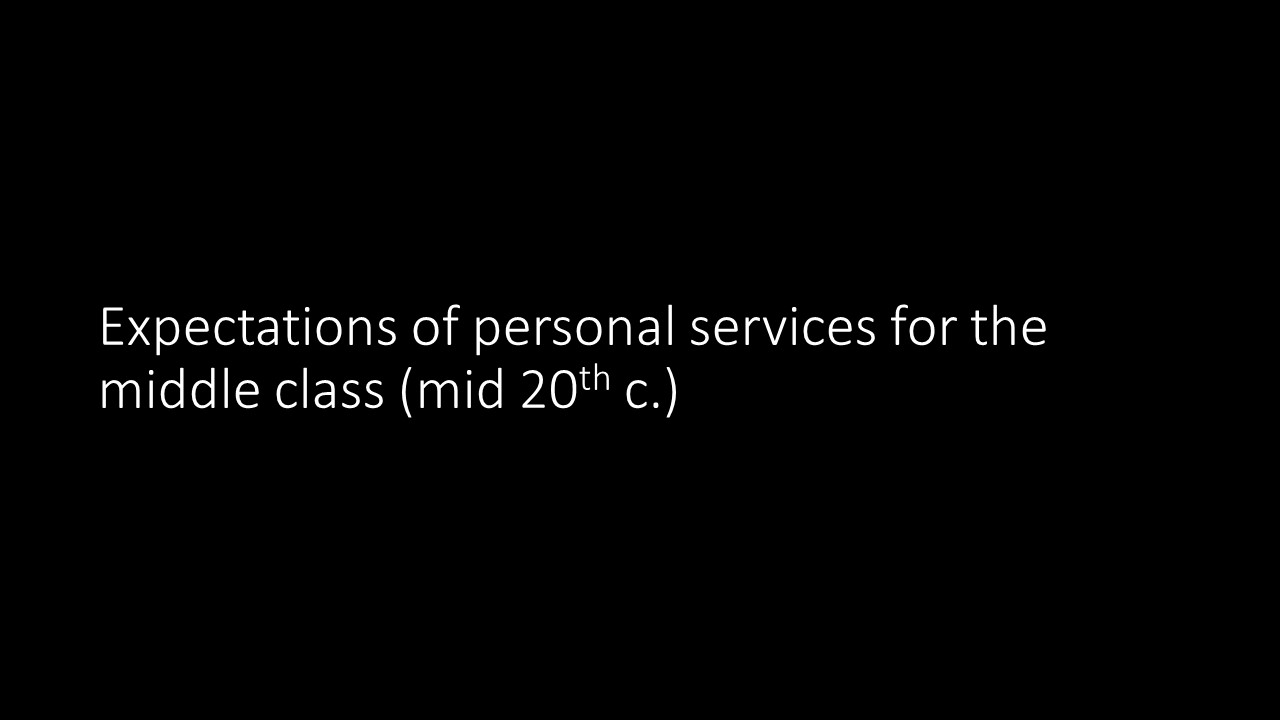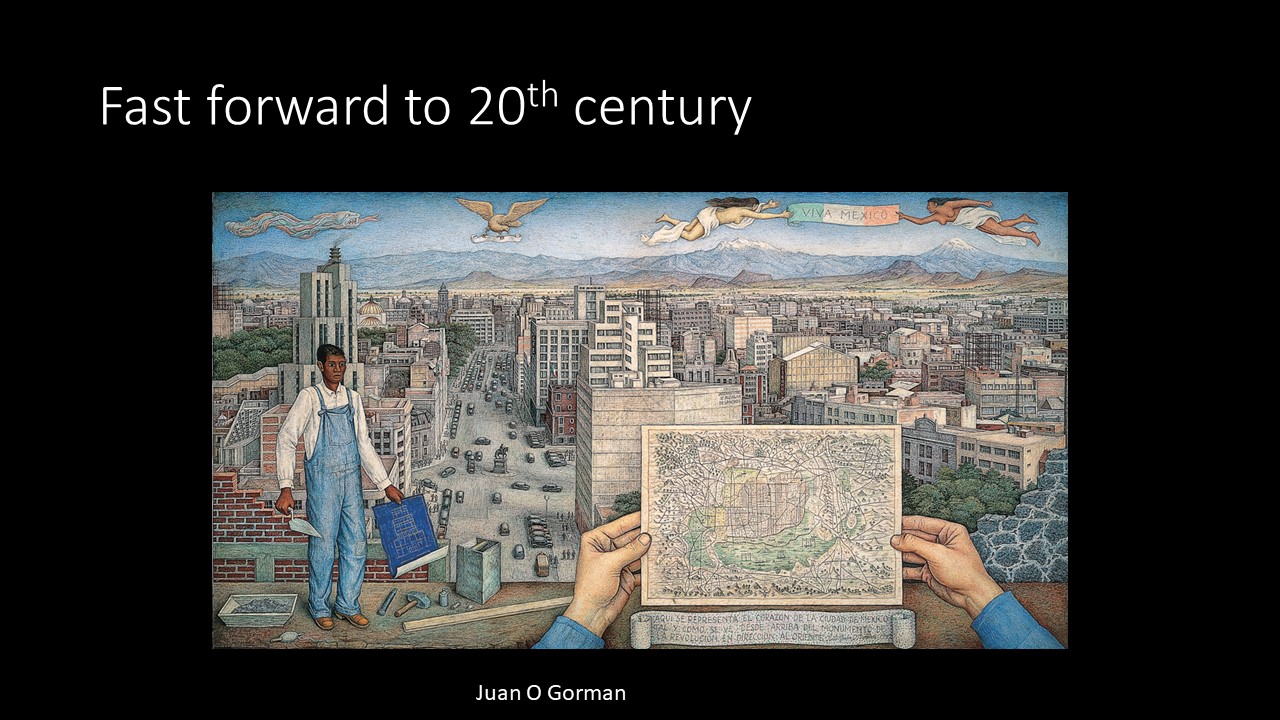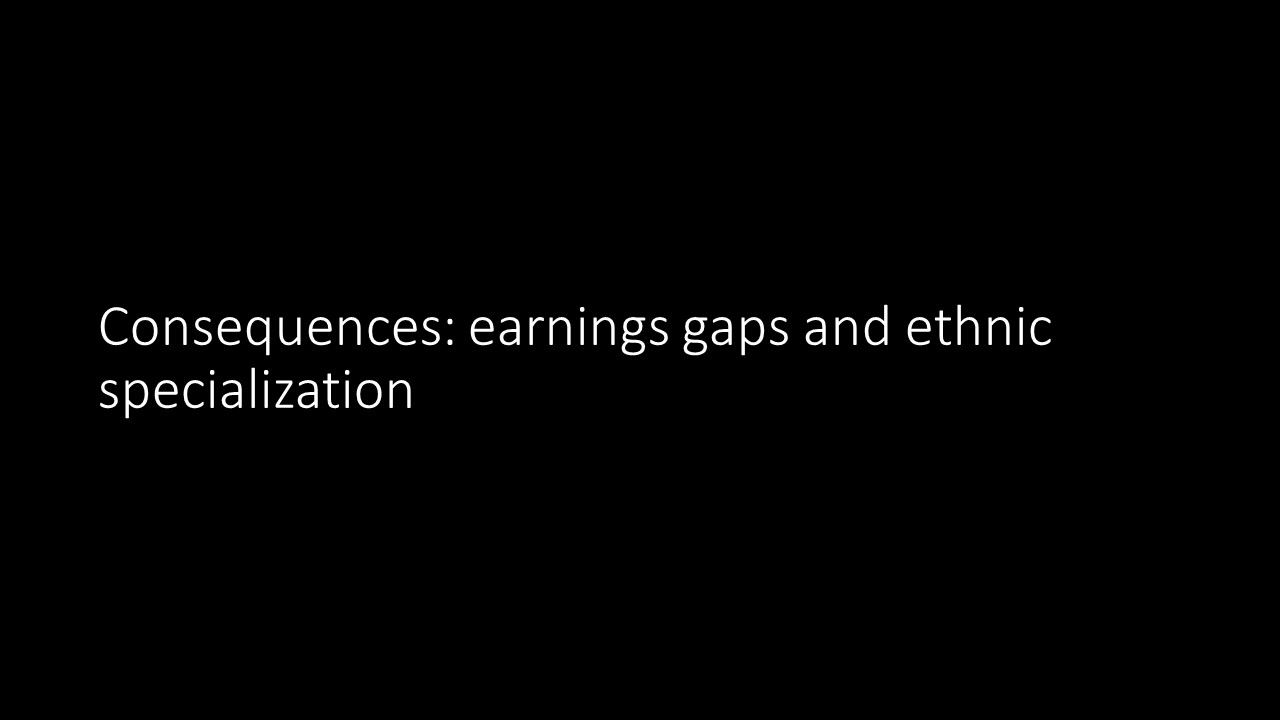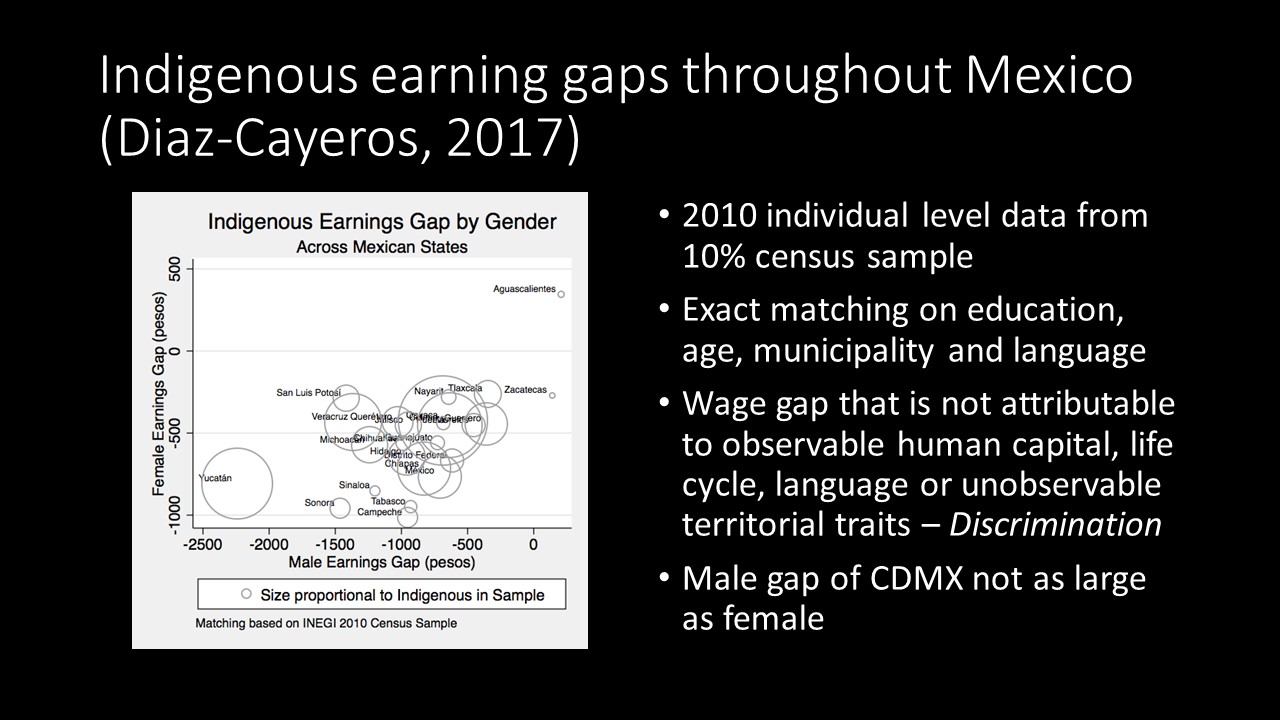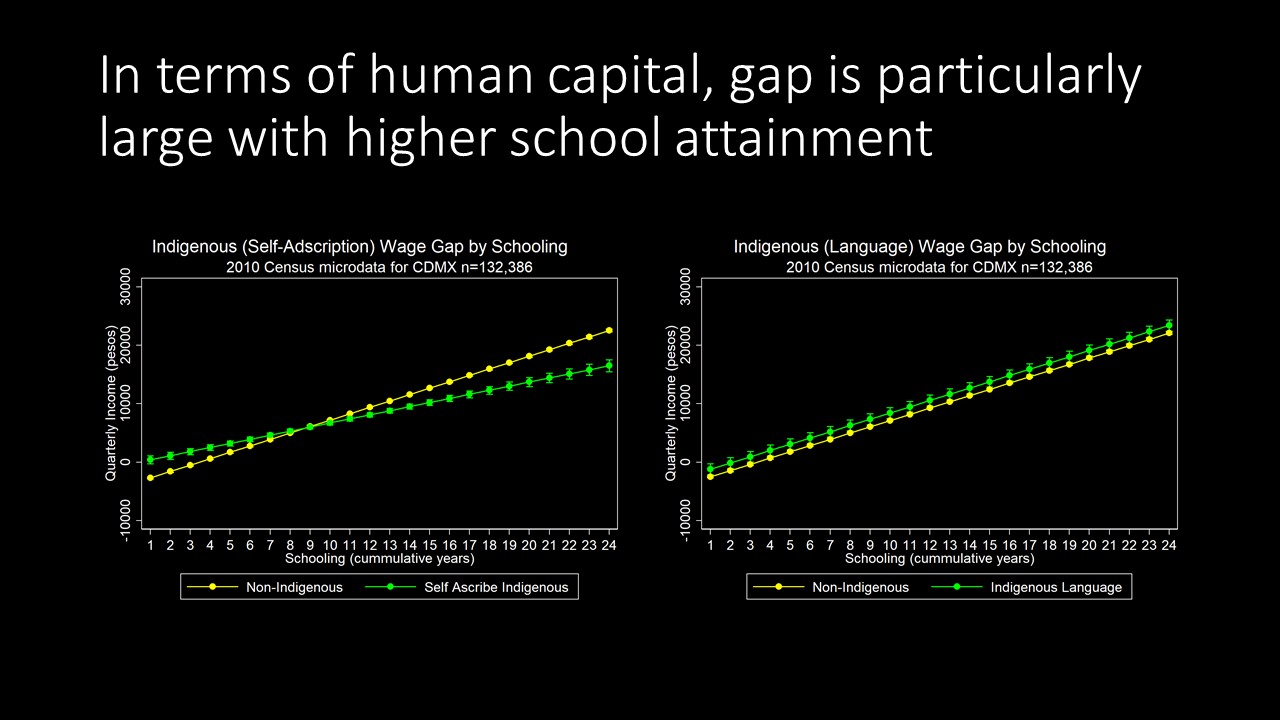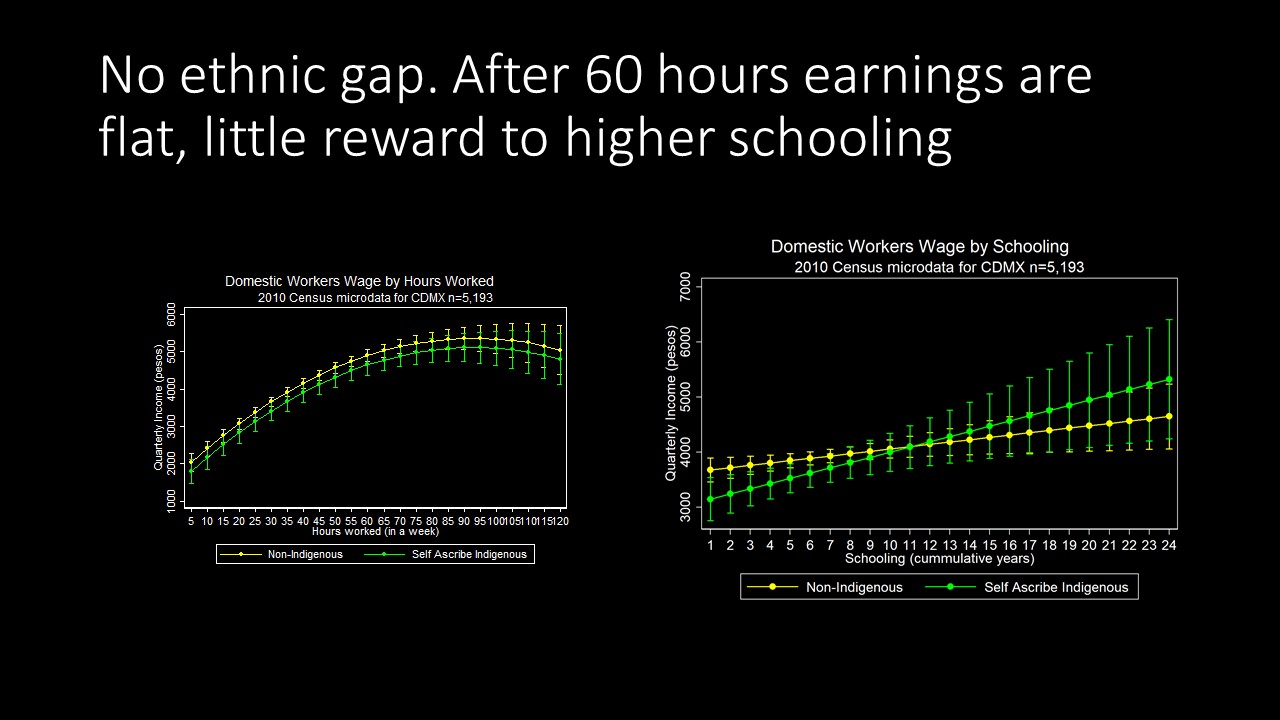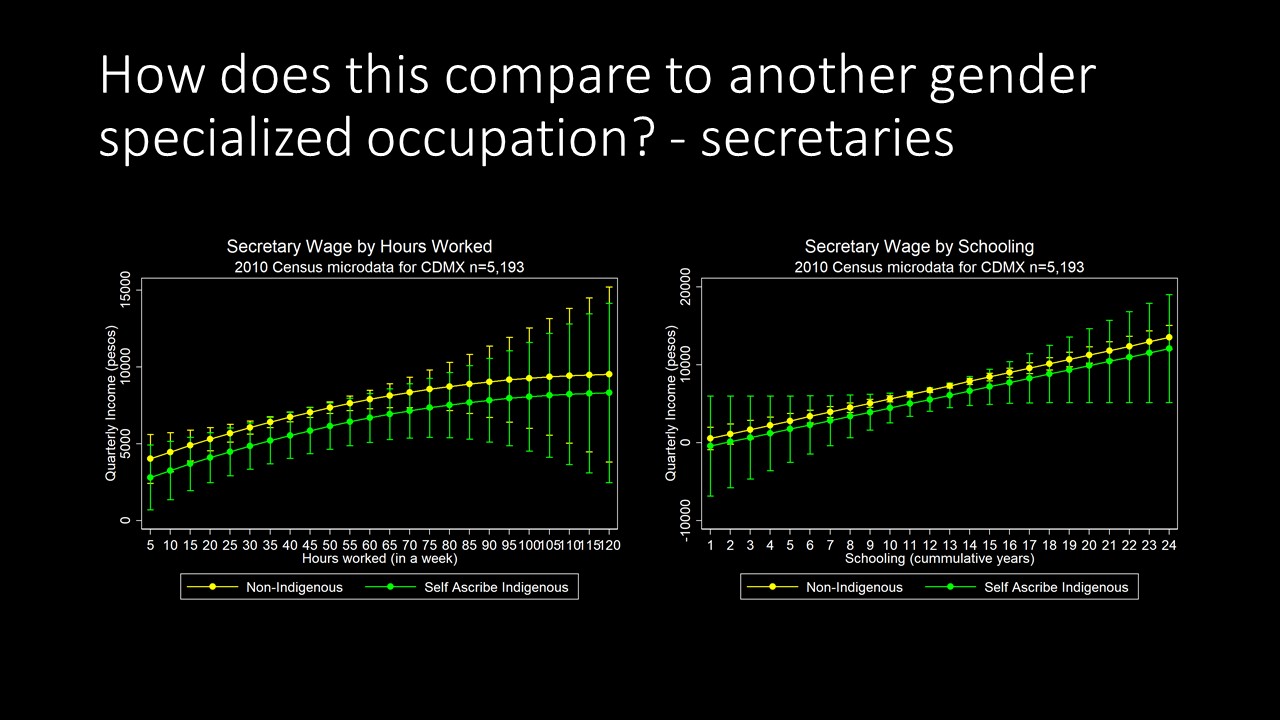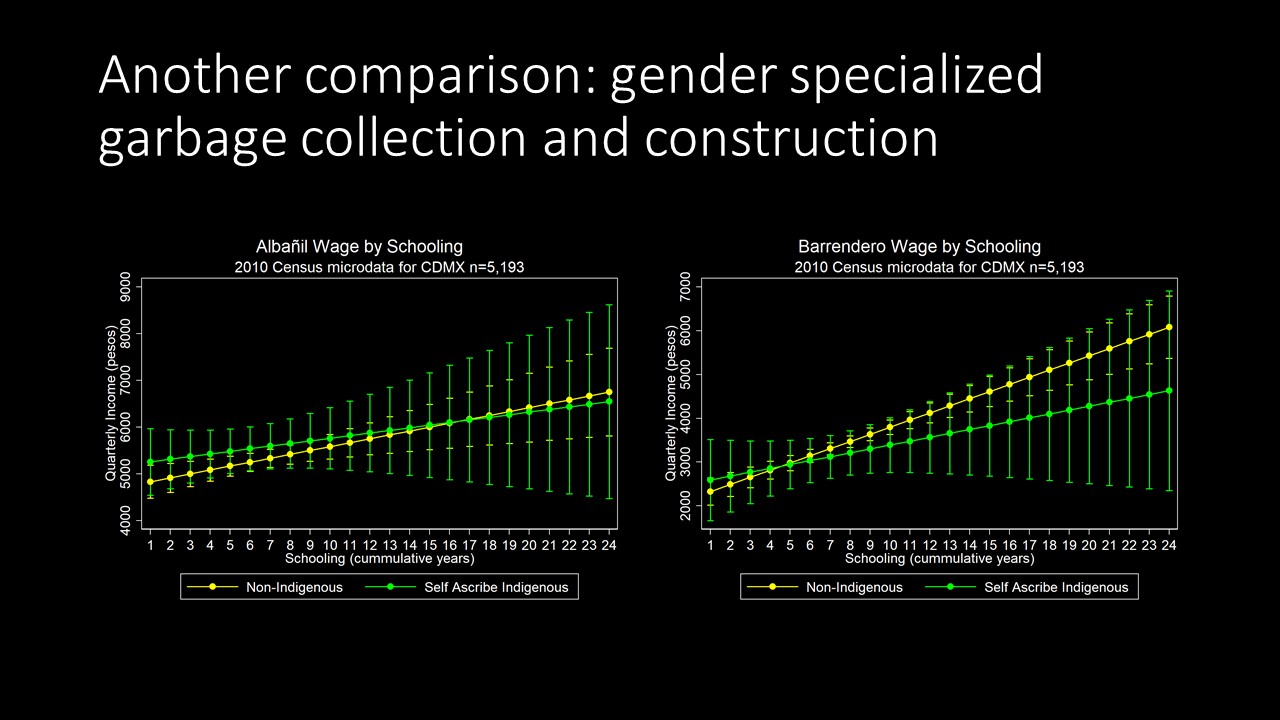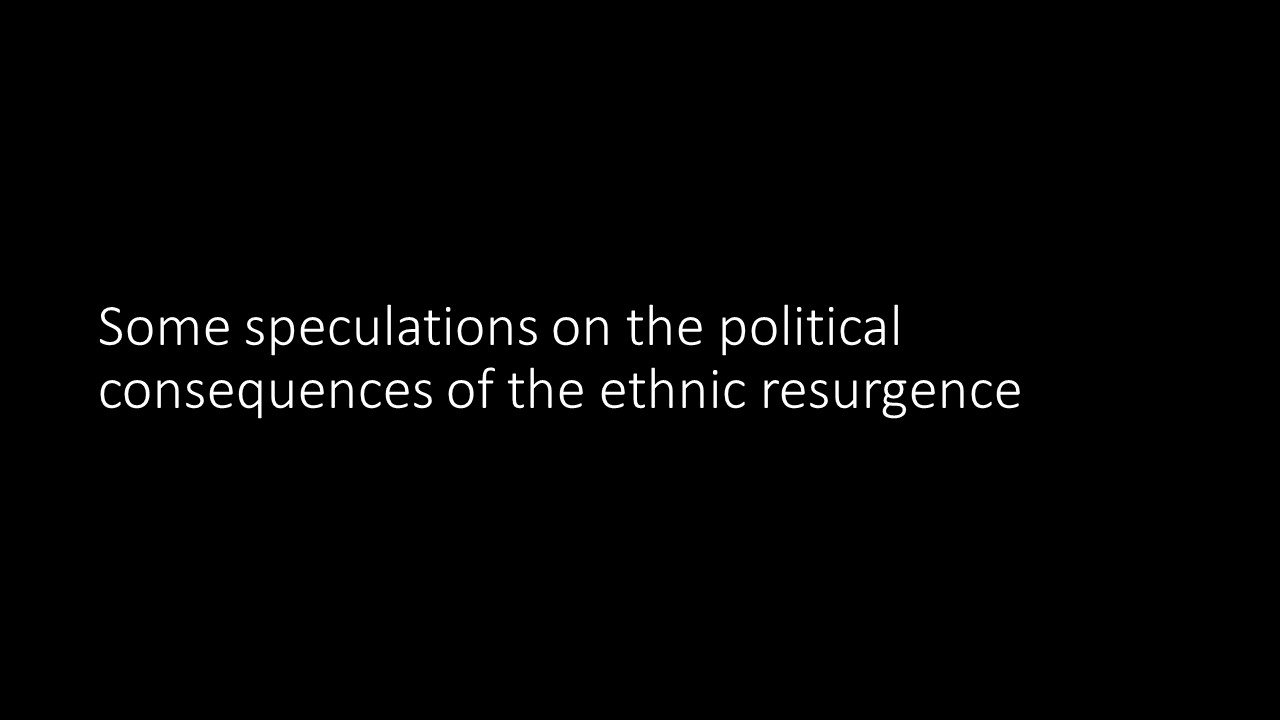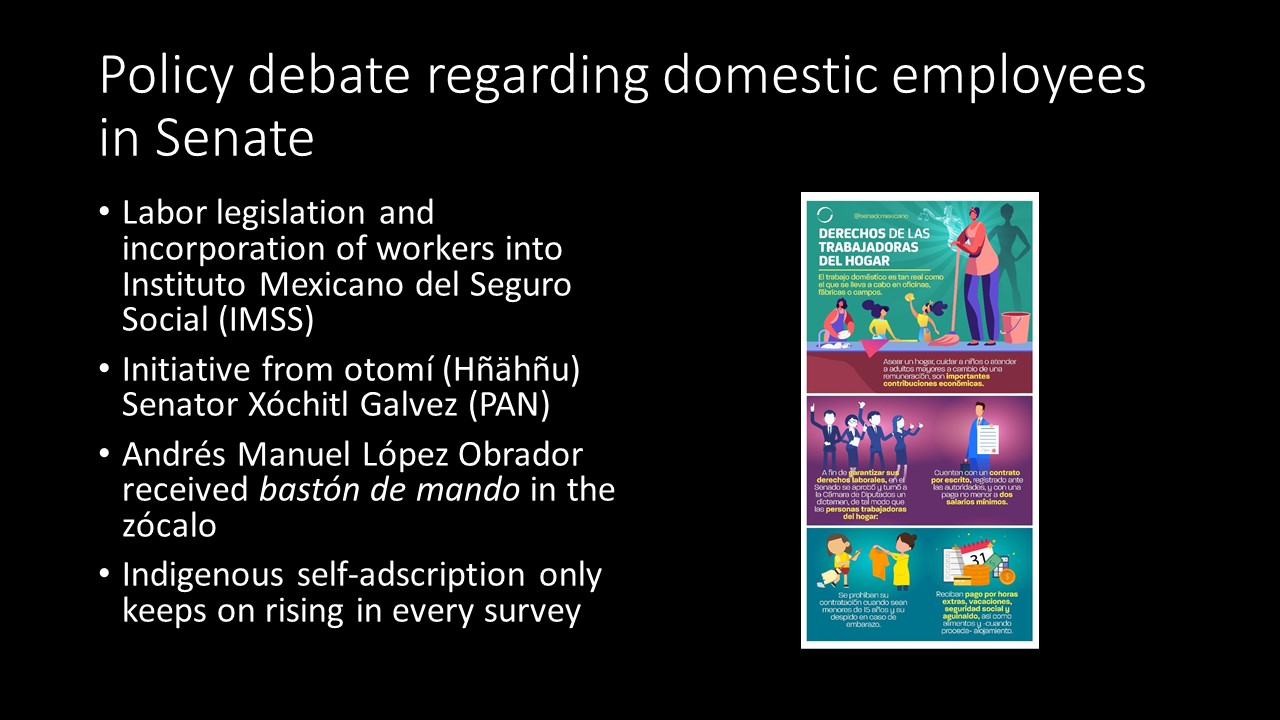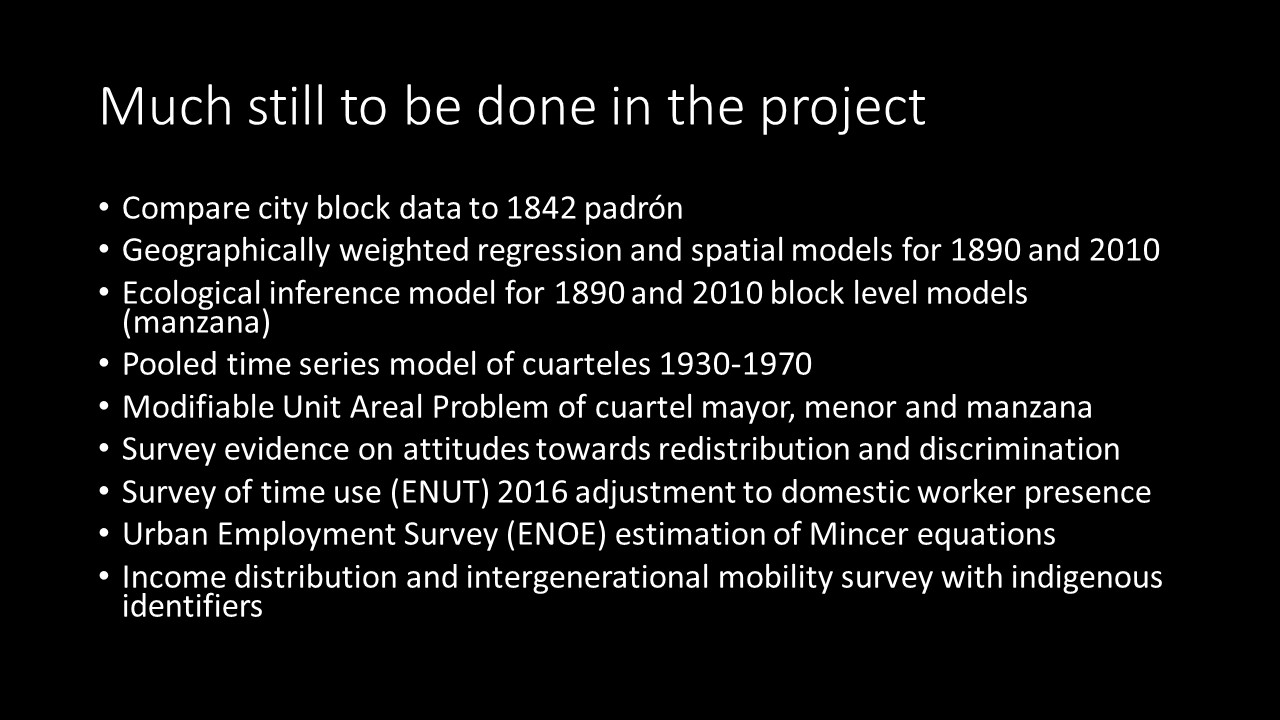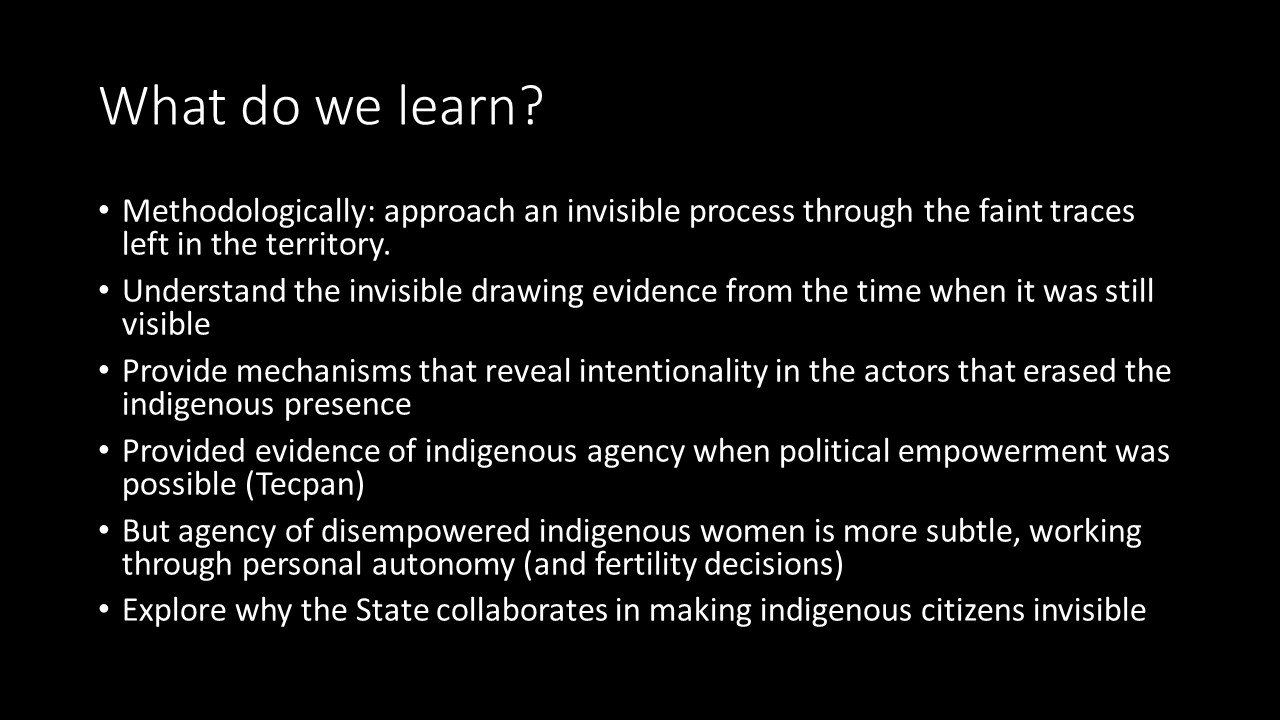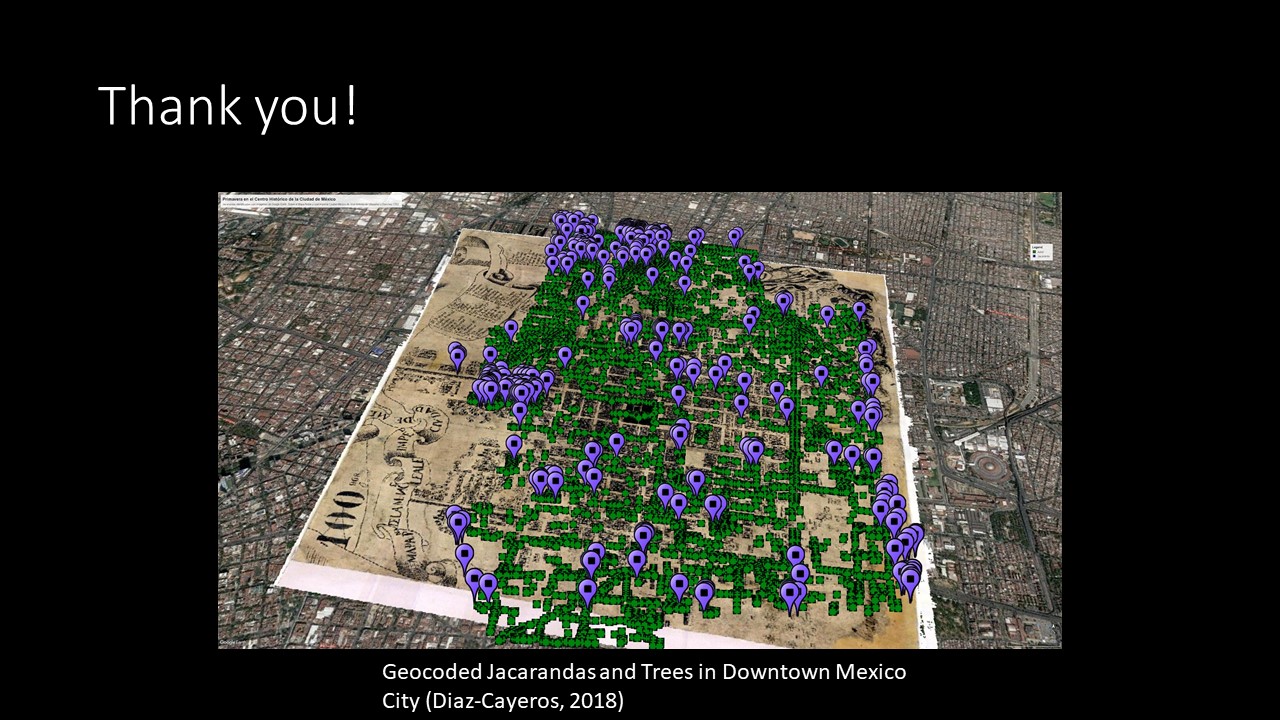My research agenda is related to governance and development in Mexico and Latin America
Resistencia, Identidad y Territorio: Mapas Indígenas (Presentación Centro Cultural Universitario Tlatelolco, CCUT, UNAM, 1o. de Septiembre 2021)
The Differential impact of COVID-19 among indigenous communities in Mexico (Presentation DRCLAS, Harvard)
SLIDES FROM CDDRL COVID-19 SEMINAR (MAY 7, 2020):
Federalism and the COVID-19 response in Mexico (with some comments relevant to Brazil and the United States)
SLIDES FROM PREVIOUS CDDRL SEMINAR (JAN 23, 2020):
Incentives for Police Professionalization in Mexico
In the face of mounting challenges from criminal activity and citizen demands for improved public safety, Mexico has undertaken significant efforts at police reform. Those efforts would presumably enhance the capacity of police forces to fight and deter crime. The presentation explored the quantity and quality of police in Mexico, a federation where multi-tier government makes incentives for police professionalization more challenging than in unitary systems. I report an analysis of individual level micro data from employment surveys (ENOE) used to estimate, through Mincer equations, the implicit wage incentives given to experience and human capital formation in the different types of police corporations, during both the Calderón and Peña Nieto presidential administrations. I also calculate, using individual level data from the 2010 Census sample, the true size of police forces, comparing members of the state corporations to all “legal specialists in the use of violence”, including private security guards at homes and businesses. The findings suggest that improving policing in Mexico is not merely a question of adding manpower or spending more budgetary resources, but of changing career incentives for greater professionalization.
Slides from my conference at the Comparative Democracy Seminar, Ash Center, Harvard University (April 25, 2019)
Persistent Voices: Domestic Workers and Indigenous Households in Mexico City
This slideshow presents preliminary fi ndings of an ongoing study of the persistence of indigenous identity and domestic workers in Mexico City. Reconstructing the demography of the little known census of 1890, together with cartographic geocoding at the city block level (manzana), the paper provides evidence of a spatially concentrated pattern of employment for domestic workers in the municipality of Mexico City in the 19th century. The analysis confi rms a long term practice of ethnic labor specialization in home and caregiving activities. Women employees, most of them indigenous, came to represent almost half of the composition of rich households. The social con figuration of household employees continued to characterize richer neighborhoods of the City well into the 1970s (live-in employees in the homes of the rich and upper middle class). The paper moves into the present geolocating the indigenous households in the downtown area of Mexico City (disaggregating the 2010 census ethnic identi ers at the city block level). I show that indigenous households in downtown Mexico City live in a few concentrated clusters of city blocks. These spatially segregated pockets of indigenous families are distinct from both the household employees living in non-indigenous homes, or the waves of indigenous immigration settling in the periphery of the metropolitan area. The analysis shows that indigenous inhabitants living today in those downtown areas are located in close proximity to the indigenous palaces (Tecpan) of 16th century Mexico-Tenochtitlan. Since the Tecpan represented loci of autonomy and judicial adjudication, the last remnants of indigenous political power in the City, I interpret these findings as a manifestation of indigenous agency and empowerment, an echo of voices that were never silenced. The paper concludes with a discussion of the persistent legacies of indigenous identity and domestic employees on wage inequality, racial discrimination, punitive criminal enforcement, as well as some speculative thoughts on political polarization and attitudes towards redistribution by the rich and the middle class.




















































